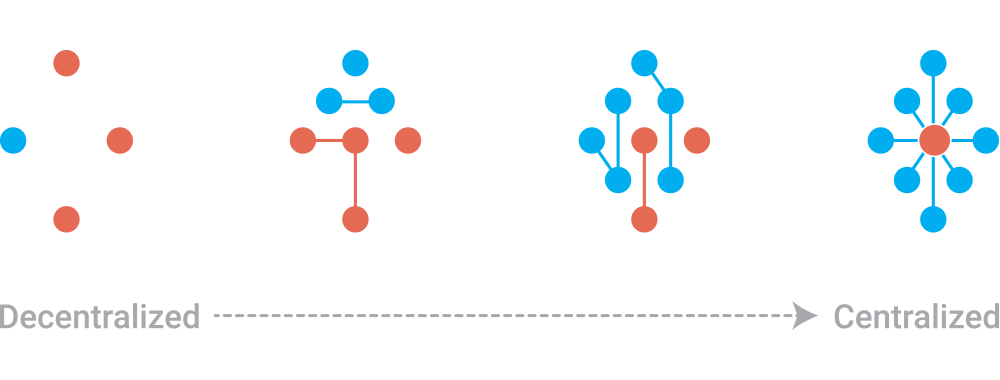Centralized vs. Decentralized Pricing and how to get buy-in from your buyers
Retailers on the price optimization journey often debate the best way to structure their pricing organization. Naturally there’s no one-size-fits-all answer, as every retailer has unique needs, processes, and infrastructures.
However, if you’re currently wondering where your organization should sit on the spectrum from centralized to decentralized pricing or looking for ways to obtain merchant buy-in, this article can help.
First let’s define centralized vs. decentralized pricing and the main purpose of each.
Centralized vs. decentralized pricing structures
A centralized pricing organization concentrates pricing authority within a single dedicated team or department. This structure helps ensure consistent pricing strategies, standardizes practices to optimize profits, and maintains pricing oversight across the enterprise.
In contrast, a decentralized pricing organization distributes pricing decisions to individual franchisees or category merchants. The focus is on allowing local teams to adapt pricing strategies to specific market conditions, customer needs, and competitive pressures.

In most cases, retailers won’t fall on either extreme end, but rather will have to find the right balance between consolidated and distributed pricing authority. And typically, that balance will shift over time as the pricing organization matures.
However, there are ample advantages to a consolidated pricing function, and we often see customers move more toward a centralized model as they progress on the price optimization journey. What follows is a quick look at some of those top benefits.
Advantages of a centralized pricing organization:
- Price perception: Greater pricing consistency across the organization that creates a cohesive price perception
- Enterprise-wide view: Balance of inventory levels, profits, competitive pricing moves, and more across all locations
- Strategic decision-making: Allows for decision-making that supports both enterprise and merchant goals
- Technology driven: Decisions driven by data science; automation that supports speed and scale
- Responsiveness: Move faster and more efficiently, allowing responses to market and competitive changes
- Regulatory oversight: Reduces risk of individual merchants breaching pricing regulations and enables swift compliance to regulatory changes
But there’s a catch...
There can be a number of challenges to building a centralized pricing organization, but the obstacle we see the most often is simply a resistance to change. As with any new system, process, or software, you will have those who are slow or hesitant to accept change. And in this case, it’s often the buyer or category merchant who displays the most opposition.
Many merchants will see a shift to centralized pricing not just as an adjustment in how they work but also as a removal of their control and decision-making ability. At the end of the day, they are still responsible for how their items and categories perform, so the last thing they want is to have no control over those outcomes.
But the purpose of having an integrated pricing function should not be to take away control from your buyers. Rather, the goal should be to leverage a central-led strategy that supports both individual merchant and enterprise objectives, while also delivering the prices customers want.
But it’s this common misconception that can result in a lack of adoption from some of your merchants. Read on to see some of our top tips for communicating that value and getting your buyers on board.
Tips for obtaining merchant buy-in:
- Build trust with data. With science-backed scenario planning and forecasting tools, it’s a simple matter to show your merchants how a central-led strategy can maximize their results.
- Use early adopters. Demonstrating value from early adopters is one of the strongest ways to win over those who are more reluctant.
- Prioritize collaboration. Merchants want to feel like they still have a voice; your centralized team should work closely with them and take their localized insights into consideration.
- Recognize the value of efficiency. Moving from separate spreadsheets to a central pricing tool eliminates grunt work and enables faster pricing decisions.
- Communicate early and often. Highlight how the changes will benefit merchants, and be up-front about how ownership might shift over time.
- Elevate your merchants. With governance, rules, analytics, and reports handled centrally, merchants can focus on strategic pricing moves for their assortments.
- Crawl, walk, and then run. Phased rollouts allow for iterative learning and more stable, successful adoption.
- Work with a strategic partner. Major pricing overhauls can benefit from external change management expertise to accelerate and smooth implementations.
The technology matters
Technology plays a critical role in achieving a more centralized pricing organization, as well as finding that win-win-win situation between the enterprise, the merchant, and the consumer—it’s not just about technology capabilities but also the partnership with the vendor.
We’ve helped many retailers leverage the Revionics AI pricing platform to restructure their pricing organizations, power more strategic decision-making, and produce stronger results across the company. If you’re looking for a partner for the journey, reach out to our pricing experts today.
Maisie is a content marketer and copywriter specializing in B2B SaaS, ecommerce and retail. She's constantly in pursuit of the perfect combination of words, and a good donut.
